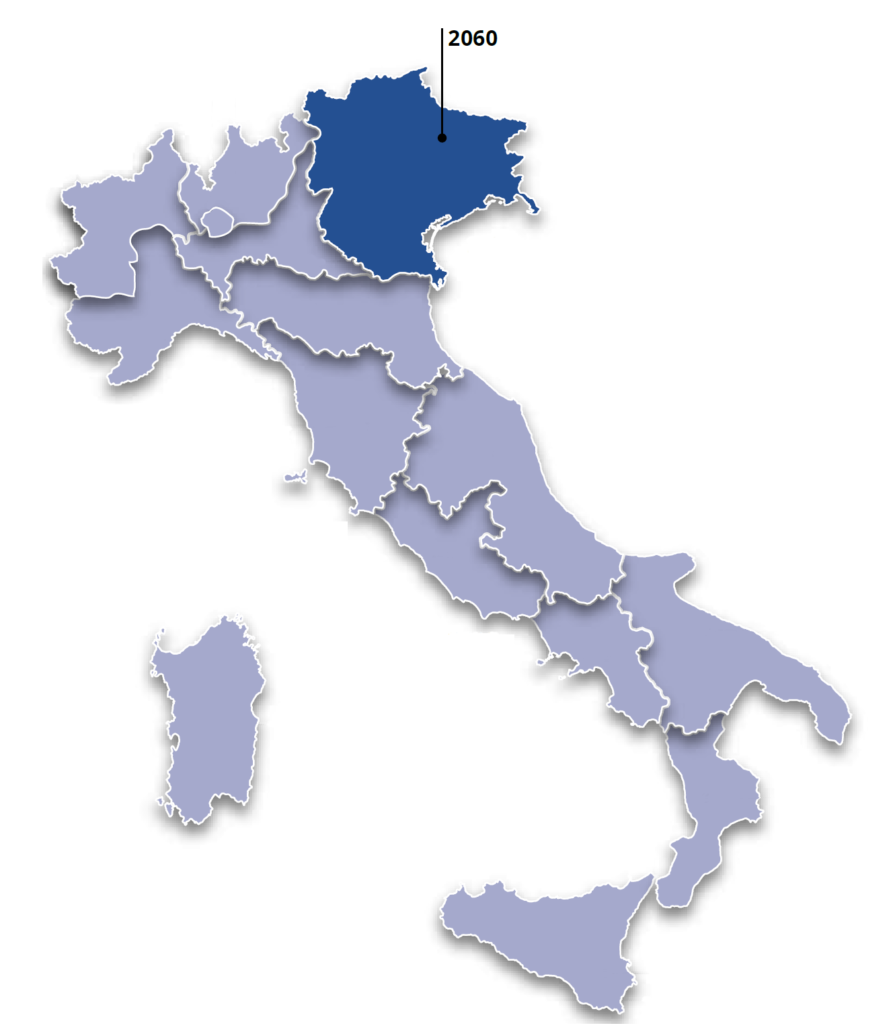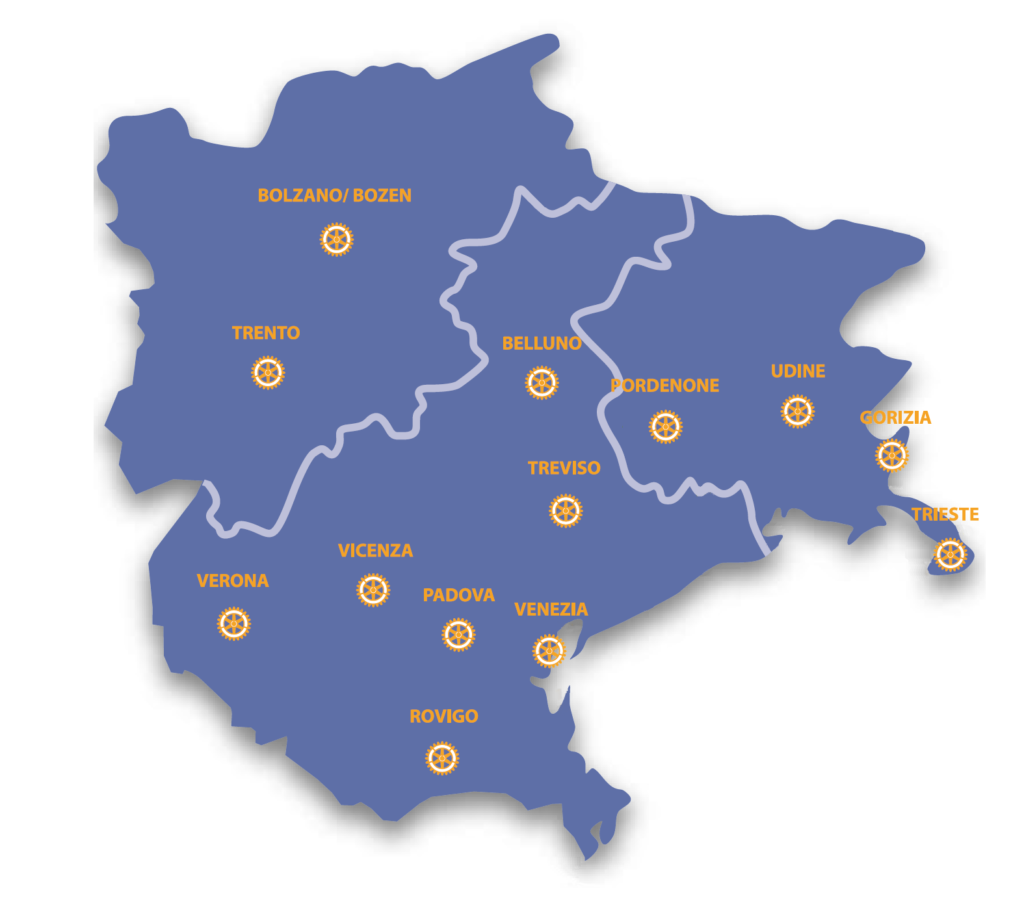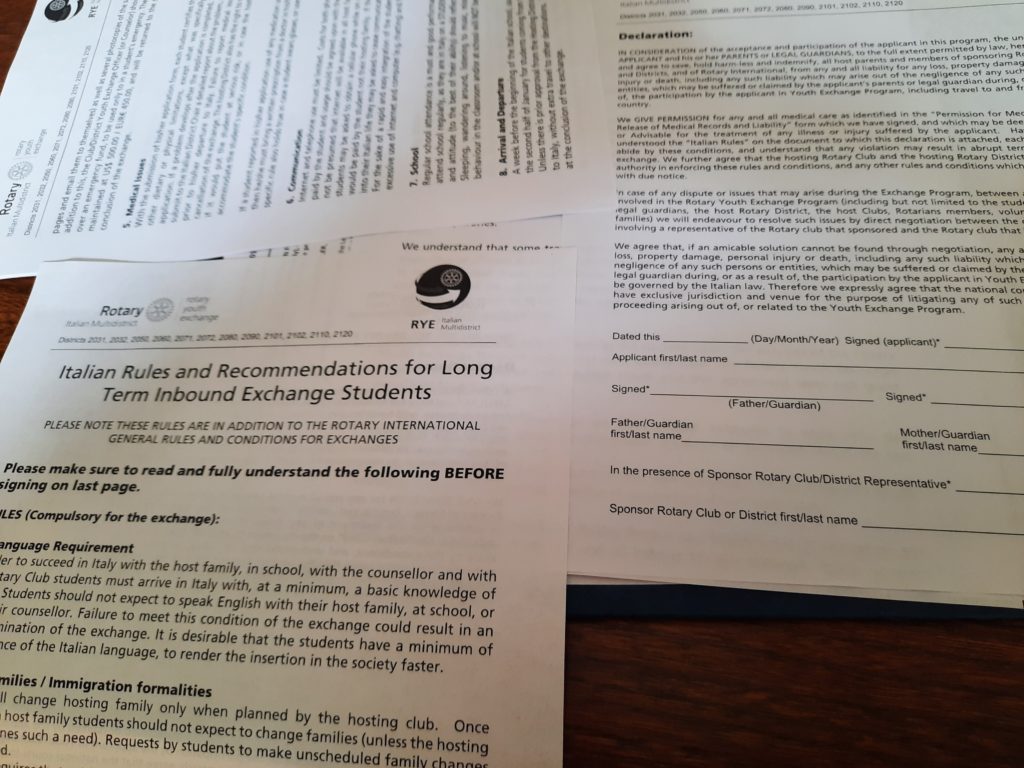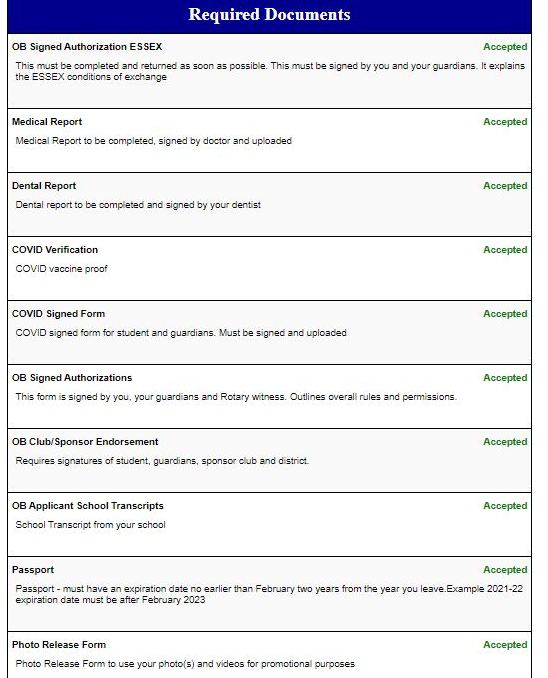I’ve mentioned that we didn’t set out, at first, for J to do a Rotary Youth Exchange. She was looking into a variety of programs to spend a school year abroad, and most of them had a fee of about $14K to $18K, not including other expenses, like flights, international insurance, visa expenses, some meals, and incidentals. The potential expense was a bit of a big gulp for us, but of course you want to offer your kid opportunities if you can possibly afford them, and we were coming out of the Covid lockdown, when high school had been such a miserable experience. With M in college already and J following soon and attending simultaneously, it really wasn’t the most daunting expense in our future.
A guidance counselor at J’s high school suggested the Rotary exchange. Now, Rotary has a whole bunch of locally-run clubs that offer exchanges, but some of them are more well-known and widely advertised than others. Since her experience, I’ve met people who applied for a Rotary exchange and were not accepted. But in our district, it was not too competitive. In some places, there may be an annual informational meeting that alerts kids to the opportunity, but at our high school, kids have to show some interest first. And, really, a lot of kids aren’t willing to miss a year of their regular high school or just be away from home for so long, holidays included. In J’s case, it seemed like her interest combined with the guidance counselor’s endorsement that she was an excellent student and a good candidate basically got her through the first barrier.
If you have a student who is interested in a Rotary Exchange, they should speak to their guidance counselor at least one year prior to when they’d like to depart.
Once J’s application process began in earnest, she attended a Rotary Club meeting in October, and she and I each wrote essays in the form of a letter to her prospective host parents. She was supposed to introduce herself, her family, and her community, tell them about her academic and extracurricular interests, describe her typical day in the USA, and speak about why she wanted to go on an exchange. I was supposed to describe my child, including what makes me proud about her, how she copes with difficulties, disagreements, and discipline, and how mature she is compared to her peers.
J also had to provide a reference from her school, and there was a $150 application fee.
With those hurdles behind us, it was time for some paperwork! I took a screen shot of the various required documents that we uploaded to get J prepared.
Some of these were more challenging than others. It’s quick and easy to sign a photo release, for example, and since J already had a passport and her Covid card, we only needed to scan and upload those.
Others required us to reach out to others: our doctor, our dentist, and the school. Still others required us to obtain signatures from members of the Rotary, people we didn’t know very well. Altogether, it wasn’t too terribly onerous, and I absolutely appreciated the online portal, which helped us to stay organized with what was checked off and what was still outstanding. Every time we got a little green Accepted status updated, J was one step closer to her adventure!
If I’m remembering correctly, we were working to complete all of this by about January of the year that she’d be leaving to study abroad.
In early February, we received the list of possible countries where J could study, and fairly soon after that, we submitted J’s top destination choices. J was originally interested in going to Sweden, but due to Covid, Sweden wasn’t welcoming students at that time. Here are the countries she was choosing from:
Along with this list, there were sometimes notes or requirements provided by the potential host country. For J, some countries were eliminated as a possibility based on these notes. France required students to have studied French for a least a year and were firm: “NO VEGETARIANS.” Thailand warned that “Girls will usually have someone with them everywhere.” Others became more intriguing: the South Koreans offered K-Pop Dance and Tae Kwon Do lessons as well as plenty of trips.
J’s instructions were to rank her top 5 countries. She went with: 1. Italy 2. Ecuador 3. Czech Republic 4. Slovakia 5. South Korea. My understanding is that the Rotarians then forward the application ~ the letter/essays, and all those supporting documents ~ to the top choice countries and you hope that your application will be accepted by the country that is your top choice, or at least in the top five. As we went through the process, we met other “Outbounds” (aka students leaving the USA to study abroad) and most of them received a top choice, although one student didn’t get any of their top 5 and had to submit choices 6 through 10. I’m not sure why that happened, although that student happened to be younger than the others, too.
At this point, things were starting to feel like, “Whoa, this is actually happening!” and the anticipation as we waited to find out the country where she’d be going was intense. For Cute W and me, we were especially nervous about the prospect of South Korea. We’ve been to Europe enough that it all feels vaguely familiar, and Ecuador is Spanish-speaking, which would be a plus for J, who’d been taking Spanish since middle school. But South Korea just felt so far! And it wasn’t just a brand-new language, but a brand-new alphabet! And, as my mother helpfully pointed out at the time, South Korea is “just so close to North Korea.”
Luckily, it only took a week or two to find out the good news: it was Italy! Once that happened, we gradually got more details. First, we learned the region in Italy where J would be studying, region 2060:

Within the regions there are various districts with local clubs, so we found this map online, too:

And eventually we learned that J would be going to the Trento area.
As J and each of her fellow Outbounds learned where they would be going, they learned about any country-specific rules they’d need to follow, and there was a whole new set of paperwork that Italy required of us, submitted via an online portal like we’d done for the USA side.

Along the way, there were Rotary meetings with the other Outbound students in which they learned more about the exchange and rules like No Ds… no drinking, no drugs, no dating, no driving, and … I think that there was another D but I can’t remember it. We knew of an exchange student who’d definitely obtained a significant other during their year abroad, and the general feedback was that drinking was often part of the cultural life, so we took it with a grain of salt. I think at the time I joked that J just wasn’t allowed to stumble around wasted and whore her way through Europe, and she didn’t seem to find that amusing.
The Rotary also helped the students prepare by requiring them to give presentations on their host countries and to show that they were studying their new language when it was necessary. They also had the students prepare a presentation about themselves, their families and hometown, and life in the USA because they’d be required to present at least once or twice at local Rotary clubs in their host countries. This was a bit of a challenge, because it was happening while school was happening, too, so J would sometimes have Rotary homework as well as regular school homework and all of her other activities. J was also reluctant to begin studying Italian during the school year because she was taking Spanish and Latin at school, and she was concerned that throwing an extra language into the mix could impact her grades for college applications.
The biggest glitch in our preparation time was that, with the program just starting up again post-Covid, J was literally the only Outbound student in our local district. That meant that she was absorbed into a neighboring district north of us, requiring extra travel to meetings and trainings. For example, in June, when we rushed off to New Hampshire on what I called a Special Family Project, it was a required Rotary retreat for Outbound students.
But even though it wasn’t always convenient, it was a wonderful experience meeting the other Outbounds, their families, and the Rotarians, and we definitely felt good about the program before J even left. They do an excellent job of putting a support system in place so that students know whom to ask if they need help in their host country. They also explained what I laughingly call “The Rotary Way,” which is that when kids are feeling homesick, confused, upset, or challenged, they’re supposed to get help from the various Rotary folks and only tell the parents about it after they’ve overcome whatever the issue was. The idea is that parents are pretty much powerless from thousands of miles away, and knowing what your child is going through won’t be helpful and will just freak you out. This made sense to me, and I’ve got to tell you: it worked great. The Rotary also advised minimal contact for the first few weeks as the kids immersed themselves, and no visits for the first 6 months. The explanation was that kids would just be starting to get the hang of things when the holiday season rolled around, and if they got together with their parents, they’d beg them to go home. As it turned out, J wasn’t really homesick at all, but she definitely had some challenges that I’m glad I didn’t know about until after they were resolved.
We also spoke with Rotarians who had become serial host families because they loved it so much. Oh, these people raved about how wonderful it was. And then, the families we met who’d hosted J just loved having her and truly seemed to enjoy the process. So, guess what? We’ll be hosting a Rotary Inbound student this fall!
[See the previous post about Preparing Academically & stay tuned for The Visa Application Process.]


